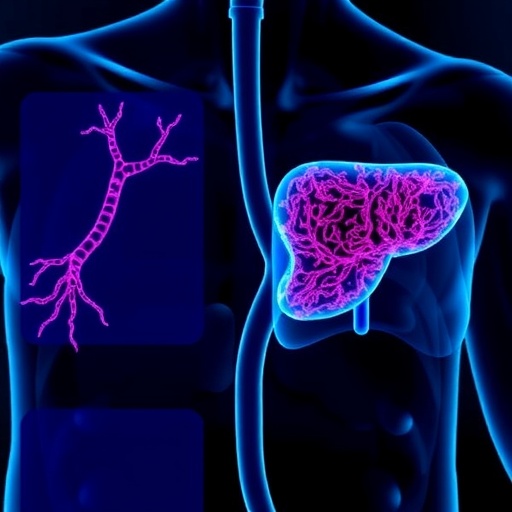
In a groundbreaking study published in BMC Cancer, researchers have unveiled compelling trends and demographic insights into malignant neoplasms among hospitalized patients in the Kashi prefecture over the span of eight years, from 2016 to 2023. This comprehensive analysis sheds light on the shifting landscape of cancer incidence in this unique geographical and ethnically diverse region, offering critical guidance for future prevention, diagnosis, and resource allocation strategies.
The team embarked on a meticulous examination of hospital records, focusing on four major comprehensive hospitals within the Kashi prefecture. By extracting and analyzing front-page medical record data from thousands of patients diagnosed with malignant neoplasms, the study aimed to characterize not only the prevalence but also the evolving patterns of these cancers over time. Their findings signal an urgent call to action for healthcare policymakers and practioners alike.
A notable finding from the study is the steady and undeniable upward trend in hospitalizations due to malignant neoplasms. Between 2016 and 2023, the number of patients admitted with cancer diagnoses has gradually increased, suggesting both a rising incidence and perhaps improved diagnostic capabilities within these healthcare institutions. This upward trajectory underscores the growing public health challenge that malignant neoplasms represent in the Kashi area, mirroring global trends in oncological epidemiology.
.adsslot_rY8LJd7zNg{width:728px !important;height:90px !important;}
@media(max-width:1199px){ .adsslot_rY8LJd7zNg{width:468px !important;height:60px !important;}
}
@media(max-width:767px){ .adsslot_rY8LJd7zNg{width:320px !important;height:50px !important;}
}
ADVERTISEMENT
Age emerged as a critical factor in the pattern of cancer occurrence among the hospitalized population. The analysis revealed that the incidence of malignant neoplasms begins to accelerate notably after the age of 40, reaching a peak at around 70 years of age. This age distribution aligns with established oncological evidence that cancer risk intensifies with advancing age, influenced by accumulative genetic mutations and diminished immune surveillance.
Remarkably, the study identified that a significant majority of the malignant neoplasm cases—approximately 70.5%—belonged to just the top ten cancer types. This concentration highlights an opportunity for targeted intervention and specialized medical focus. Among these dominant types, gastrointestinal cancers formed the largest subgroup, accounting for 43.6% of all hospitalizations, underscoring the vital need to address digestive system malignancies prevalent in this population.
Gender disparities were also evident in the cancer profile of hospitalized patients. In males, stomach cancer stood out as the most common malignancy, reflecting possible environmental, dietary, or genetic predispositions influencing male health outcomes in the region. Contrastingly, cervical cancer emerged as the leading cause in female patients, emphasizing the ongoing significance of women’s health initiatives and the necessity for effective cervical cancer screening and prevention programs.
Exploring ethnic variations provided further depth to the study’s findings. Among minority ethnic groups within the Kashi prefecture, gastrointestinal cancers exhibited an even higher prevalence, making up 44.8% of malignant neoplasm hospitalizations. This ethnic discrepancy points toward underlying genetic susceptibilities, lifestyle factors, or disparities in healthcare access that warrant focused research and culturally sensitive public health strategies.
The clinical implications of these demographic and epidemiological insights are profound. Recognizing the predominance of cancers such as stomach, esophageal, cervical, breast, and colorectal cancers allows for the design of more focused screening and early detection programs. Tailoring these healthcare measures comprehensively could significantly improve patient outcomes by facilitating earlier diagnosis and timely treatment accessibility.
Resource allocation within the healthcare infrastructure of the Kashi prefecture stands to benefit immensely from these findings. Directing funding, workforce training, and technological investments toward disciplines dealing with prevalent malignancies can enhance treatment efficacy and patient survival rates. Moreover, these data can influence the planning and expansion of specialized oncology units, thereby elevating the standard of care available locally.
Public health education emerges as another critical facet in combating the cancer burden highlighted by this study. Awareness campaigns and community engagement efforts designed around the identified high-risk groups and common tumor types can empower the populace with knowledge about symptoms, risk factors, and preventive behaviors. Such strategies, when adequately resourced and culturally adapted, have the potential to alter disease trajectories at the population level.
The longitudinal approach of the study allows for the observation of temporal trends that might reflect changes in environmental exposures, lifestyle modifications, or improvements in healthcare delivery. Tracking these dynamic patterns over extended periods facilitates predictive modeling and informs the development of proactive health policies tailored to the Kashi prefecture’s evolving oncological profile.
Technically, the study leveraged robust data analytics methodologies to ensure accurate categorization and trend assessment. The consistent data collection from four comprehensive hospitals enhances the reliability of the observed patterns, although future studies might expand to include outpatient data and smaller medical centers for a more holistic perspective.
The research team’s integration of demographic variables such as age, gender, and ethnicity provides a multidimensional understanding of cancer epidemiology in this setting. This multifaceted analysis is critical because it acknowledges the intersectionality of risk factors influencing cancer prevalence and offers a nuanced view necessary for sophisticated healthcare planning.
In summary, this primary analysis not only maps out the malignant neoplasm landscape within the Kashi prefecture but also serves as a strategic blueprint for targeted healthcare interventions. The escalating trends necessitate urgent and sustained efforts in cancer prevention, early detection, and specialized treatment modalities tailored to the local demographic realities. This study stands as a benchmark for future oncological research and public health initiatives in similar regions facing rising cancer burdens.
By harnessing epidemiological data and combining it with clinical insights, the healthcare community can better anticipate and mitigate the challenges posed by malignant neoplasms. The Kashi prefecture’s experience underscores a global oncology truth: strategic, evidence-based actions grounded in local data are vital to curbing the cancer epidemic and enhancing patient care worldwide.
Subject of Research: Trends and demographic distribution of malignant neoplasms among hospitalized patients in the Kashi prefecture from 2016 to 2023.
Article Title: Primary analysis of malignant neoplasm trends and demographics in hospitalized patients in Kashi prefecture from 2016 to 2023.
Article References:
Kade, N., Yakufu, W., Zhang, C. et al. Primary analysis of malignant neoplasm trends and demographics in hospitalized patients in Kashi prefecture from 2016 to 2023. BMC Cancer 25, 1345 (2025). https://doi.org/10.1186/s12885-025-14783-9
Image Credits: Scienmag.com
DOI: https://doi.org/10.1186/s12885-025-14783-9
Tags: cancer incidence analysis Kashi hospitalscomprehensive cancer analysisdemographic insights malignant neoplasmseight-year cancer study Kashihealthcare policy cancer preventionhospital records cancer researchhospitalization trends cancer KashiKashi cancer trends 2016 to 2023malignant neoplasm trends in Kashipublic health challenges malignant neoplasmsresource allocation cancer diagnosisrising cancer cases Kashi prefecture





